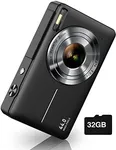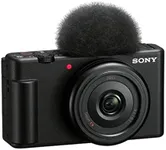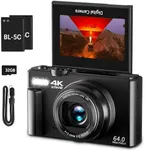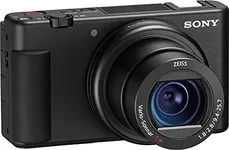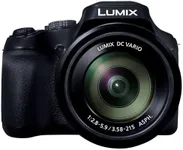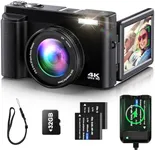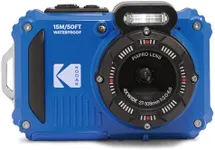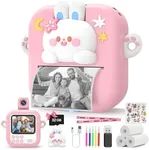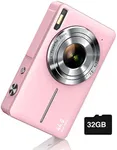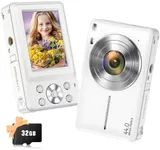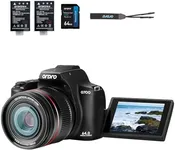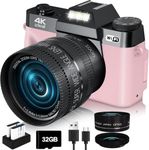Buying Guide for the Best Pocket Digital Cameras
When choosing a pocket digital camera, it's important to consider several key specifications to ensure you get the best fit for your needs. Pocket digital cameras are designed to be compact and portable, making them ideal for everyday use, travel, and casual photography. Understanding the key specs will help you make an informed decision and find a camera that meets your requirements.MegapixelsMegapixels (MP) refer to the resolution of the camera's sensor, which determines the detail and clarity of the images. Higher megapixels mean more detail, which is important if you plan to print large photos or crop images without losing quality. For general use, a camera with 12-20 MP is usually sufficient. If you need higher resolution for professional or detailed work, look for cameras with 20 MP or more.
Sensor SizeThe sensor size affects the camera's ability to capture light and detail. Larger sensors generally produce better image quality, especially in low light conditions. Common sensor sizes in pocket digital cameras include 1/2.3-inch, 1-inch, and APS-C. For casual photography, a 1/2.3-inch sensor is adequate. If you want better performance in low light and higher image quality, consider a camera with a 1-inch or larger sensor.
Zoom RangeThe zoom range indicates how much the camera can magnify distant subjects. Optical zoom is more important than digital zoom, as it maintains image quality. A zoom range of 3x to 5x is suitable for everyday use, while a range of 10x or more is ideal for travel and capturing distant subjects. Choose a zoom range based on how close you need to get to your subjects and the types of scenes you plan to photograph.
Image StabilizationImage stabilization helps reduce blur caused by camera shake, especially in low light or when using zoom. Optical image stabilization (OIS) is more effective than digital stabilization. If you often shoot in low light or use the zoom frequently, look for a camera with OIS to ensure sharper images. For casual use, digital stabilization may be sufficient, but OIS is preferred for better results.
Video QualityVideo quality is important if you plan to record videos with your camera. Common resolutions include 1080p (Full HD) and 4K. Full HD is suitable for most users and provides good quality for sharing online or viewing on a TV. If you want higher resolution and more detail, especially for larger screens, consider a camera that can record in 4K. Choose based on how often you plan to record videos and the quality you desire.
Battery LifeBattery life determines how long you can use the camera before needing to recharge or replace the battery. It's measured in the number of shots per charge. For casual use, a battery life of 200-300 shots is usually sufficient. If you plan to use the camera extensively, such as during travel or events, look for a camera with a longer battery life or the option to carry spare batteries.
ConnectivityConnectivity options like Wi-Fi, Bluetooth, and NFC allow you to easily transfer photos and videos to other devices or share them online. Wi-Fi is the most common and useful for transferring files to your smartphone or computer. Bluetooth and NFC can simplify pairing and sharing. If you frequently share your photos on social media or need to transfer files quickly, look for a camera with these connectivity features.
Build Quality and DesignThe build quality and design affect the camera's durability and ease of use. Look for a camera with a solid build, comfortable grip, and intuitive controls. A compact and lightweight design is ideal for portability. If you plan to use the camera in various environments, consider one with weather sealing or rugged features. Choose a design that feels comfortable in your hands and suits your style of use.
